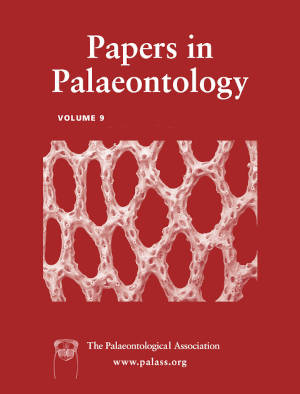Article: An enigmatic structure in the tail of vetulicolians from the Cambrian Chengjiang biota, South China
Publication: Papers in Palaeontology
Volume:
9
Part:
6
Publication Date:
2023
Article number:
e1537
Author(s):
Yang Yang, Bi’ang Su, Qiang Ou, Meirong Cheng, Jian Han, and Degan Shu
DOI:
10.1002/spp2.1537
Abstract
Abstract Cambrian vetulicolians have mosaic characteristics of both deuterostomes and protostomes, which has important implications for the origin and early evolution of the Deuterostomia. They are intriguing in their bizarre body plan with a series of pharyngeal gill slits. The anterior section is characterized by five pairs of gill pouches, while the paddle-like posterior part is composed of seven or more segments. Although the overall external morphology and some internal anatomies of vetulicolians, such as pharyngeal cavity, gill system and alimentary canal, have largely been clarified, mysteries remain regarding some other internal structures, and their functional interpretations are highly controversial. In this study we identify an important but hitherto unrecognized feature: a sub-rounded, wrinkled structure located ventrally at the posterior section (or ‘tail’) of weakly sclerotized members of vetulicolians, including Xidazoon stephanus and Didazoon haoae, from the early Cambrian Chengjiang biota. The enigmatic structure consistently appears at or between the third and fourth segments of the posterior section. We show that the new structure is an internal organ in the body cavity of vetulicolians and infer that it might have functioned for reproduction, excretion or digestion. The finding of this enigmatic structure from X. stephanus and D. haoae enriches our understanding of vetulicolians and might facilitate further exploration of the anatomy and physiology of early deuterostomes.
